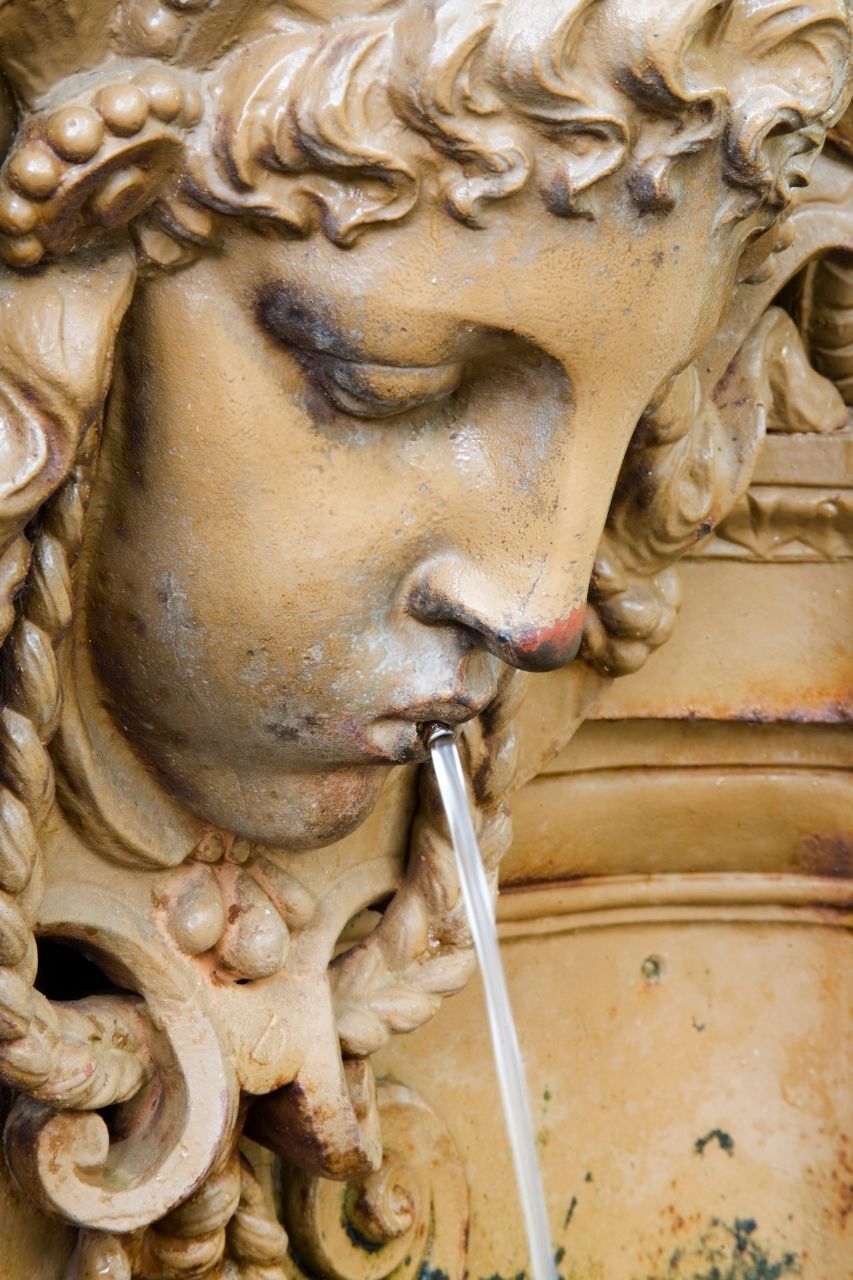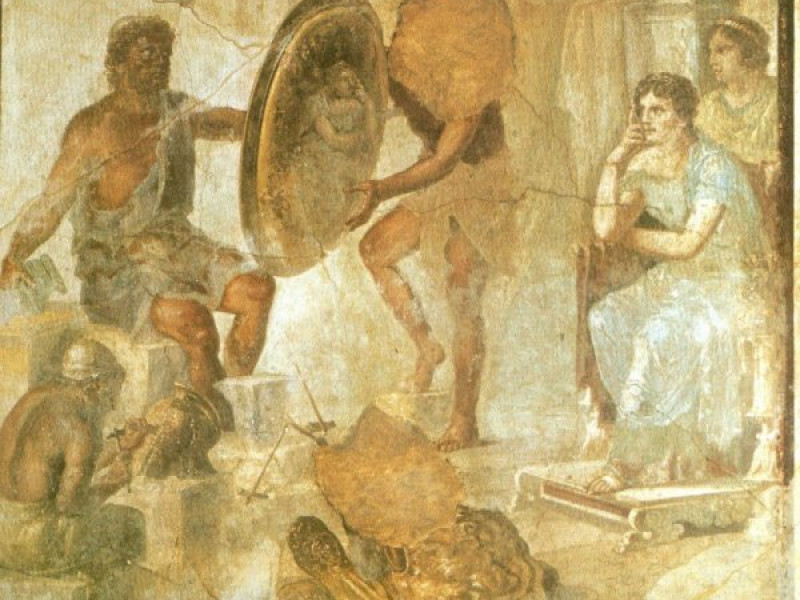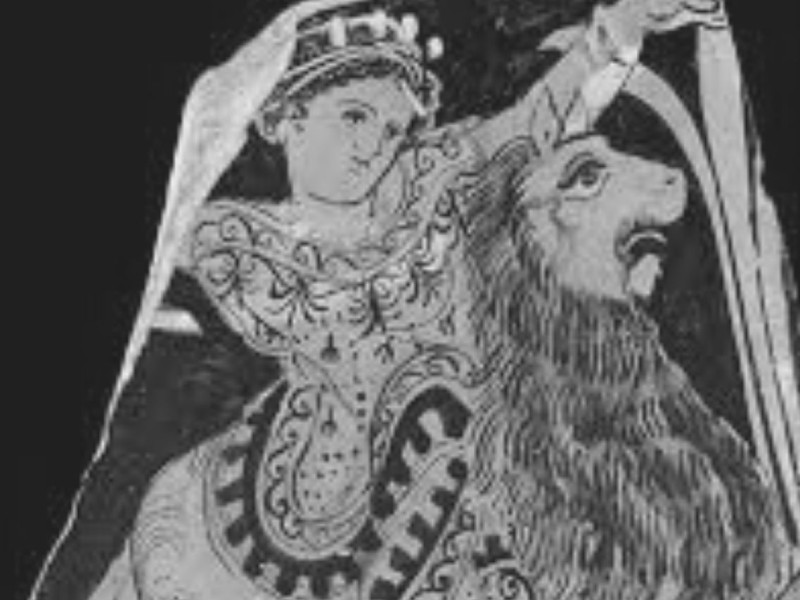Tethys
Tethys: Spirit of Water and Mother of Thousands
Tethys, Titan of flowing water, was one of the more obscure first-generation Titans in Greek mythology. She didn’t play much of an active role in many myths, but she is remembered for her impressive number of children.
Who Was Tethys in Greek Mythology?
Tethys was the daughter of Uranus and Gaia. Like the rest of the first-generation Titans, she represented a concept more than an actual object or location. She is often misconstrued as the Titan goddess of the oceans, but actually, she was the personification of all fresh, flowing waters. Water held the power of life, death, and renewal. It was her responsibility to ensure that this divine element moved and flowed freely about the world.
Tethys’ name is likely related to the Ancient Greek tethē, meaning grandmother. This would align with her copious fertility and her famous grandchildren. Tethē is also similar to another Indo-European word meaning to suck or to suckle. Some sources suggest that this is related to an obscure alternate myth about Tethys serving as nursemaid to Hera. Both definitions seem to adequately fit Tethys’s maternal nature.
She was seldom mentioned in Greek literature, and those mentions were usually references to her children or grandchildren. Still, those infrequent appearances in myth support her nurturing, motherly attributes. This is not surprising since water is such a vital foundation of life.
Like several other Titans, Tethys gave her name to one of the moons that orbit Saturn. In an interesting coincidence, modern scientists have discovered that the moon Tethys is composed only of water and ice.
The Creation Myth: Tethys’ Birth and Family
Like many of the first-generation Titans, not much is known about the story of Tethys.
In the beginning, there was only Chaos. From Chaos came the first primordial deities, such as Gaia (Earth), Erebus (Darkness), and Nyx (Night). Gaia gave birth to Uranus (Sky). Their marital union created the original twelve giants known as the Titans. Some sources reported that these siblings were actually six sets of twins:
Oceanus, the river encircling the Earth – Tethys, goddess of the ocean
Iapetus, god of mortality and violent death – Themis, goddess of justice
Coeus, god of curiosity and inquisitiveness – Phoebe, goddess of intelligence and foresight
Hyperion, god of the light of the heavens – Theia, goddess of vision
Crius, god of the constellations – Mnemosyne, goddess of memory
Cronus, god of time – Rhea, goddess of fertility and motherhood
Uranus and Gaia were also the parents of other races of giants. Most easily recognized were the one-eyed Cyclops, who were master artisans. Less well-known were the Hecatonchires, who had 50 heads and one hundred hands each. This made them mighty fighters.
Oceanus and Tethys: Siblings and Lovers
The twins Oceanus and Tethys were well suited to each other. While Tethys was the personification of fresh waters, Oceanus represented Okeanos, the oceans that surrounded the entire Earth.
Together, they had an incredible number of children. Most notable of these were the 3,000 female Oceanids, nymphs of the oceans. Usually, this number is understood as a metaphor, indicating that the number was too high to count.
Several of the Oceanids made favorable matches with other first- or second-generation Titans and bore children that figured more prominently in Greek myths. These fortunate unions made Tethys the grandmother of many prominent gods and heroes, such as Athena, Prometheus, Epimetheus, Atlas, Achilles, and the Pleiades.
In addition to the Oceanids, Oceanus and Tethys also served as parents to the 3,000 male river spirits called the Potamoi. These rivers included the Nile and the fabled Styx, among others. The Potamoi were also the fathers of the Naiads, freshwater nymphs who would assist their fathers in protecting the rivers and streams.
Despite their parents remaining neutral in warfare, the Potamoi were known for being hotheaded warriors. They sided with the Giants when they rebelled against Zeus, and they picked fights with heroes such as Achilles and Heracles.
The Titanomachy: Foundations of the Conflict
Tethys played no active role in the events before or during the Titanomachy. Still, she was indirectly involved simply because of her Titan blood.
Uranus was a jealous, tyrannical ruler. He imprisoned the Cyclopes and the Hecatonchires in the abyss of Tartarus, deep within the Earth. Sources suggested he was offended by their ugliness, or more likely, apprehensive of their great strength. The Titans, being a smaller, more attractive race, escaped this fate. However, it was eventually the Titans who rose up against him.
Gaia was upset at the treatment of her children, and their imprisonment in Tartarus caused her physical pain. She gathered the Titans and convinced them to rise up against their father. They agreed, but only Cronus was willing to wield a weapon against him.
The Titan brothers that served as the Four Pillars of Heaven volunteered to assist Cronus. Coeus, Crius, Iapetus, and Hyperion ambushed him and pinned each of his limbs at the corners of the earth. Cronus took an adamantine sickle and castrated his father, flinging his testicles into the sea. In disgrace and pain, Uranus fled back into the cosmos.
The Titanomachy: The Rise and Fall of the Golden Age
Cronus assumed his father’s throne and ruled over what was known as the Golden Age. However, he eventually proved to be a tyrant as well. Cronus became obsessed with a prophecy that said his children would rise up to defeat him as he had deposed his own father. In his madness, he decided to eat his children as soon as they were born.
Hestia, Demeter, Hera, Hades, and Poseidon were swallowed whole just after their birth. Rhea saved her sixth child, Zeus, by tricking Cronus into eating a stone wrapped in cloth instead.
At this point in the tale, an alternative myth about Tethys came into play. An obscure fragment of The Iliad suggested that Hera, too, was spared this intestinal torture. While Zeus grew to manhood on the Island of Crete, Hera was hidden in the castle of Oceanus, Tethys’s husband. This fragment related that Tethys served as Hera’s wet nurse while she was an infant:
“For I am faring to visit the limits of the all-nurturing earth,
And Oceanus, from whom the gods are sprung,
And mother Tethys, even them that lovingly nursed
And cherished me in their halls,
When they had taken me from Rhea,
What time Zeus, whose voice is borne afar,
Thrust Cronos down to dwell beneath Earth
And the unresting sea.”
-Homer, The Iliad
Despite this passage in such a famous work, it is still generally accepted that Hera was one of Cronus’s culinary victims.
The Titanomachy: Victory to the New Olympians
When Zeus was grown, he returned and disguised himself as Cronus’ cupbearer. He slipped an emetic into Cronus’ wine, which caused Cronus to vomit up Zeus’s siblings, full-grown. These were the first six Olympian gods, and they did indeed rise up against their father.
At this point, war was inevitable. While most of the Titans and their children fought for Cronus, a few sided with Zeus and the new Olympians. Tethys and most of the female Titans took no active part in the battle. In fact, Tethys and Oceanus offered refuge to the female Titans while the conflict raged. Likely, Hera sheltered there as well, which might have led to the confusing poem fragment.
The battle raged for 10 years, and eventually the Olympians were triumphant. Those male Titans who sided with Cronus were condemned to suffer in the abyss of Tartarus. Since they took no part in the battle, the female Titans were spared.
One Final Myth Involving Tethys
After the conclusion of the war, Tethys and several of the other Titans faded into obscurity. Only one later myth mentioned Tethys in passing, and it again involved her relationship with Hera.
Zeus seduced the nymph Callisto and impregnated her. The jealous Hera turned Callisto into a bear, and Artemis hunted and killed her. Zeus set the bear in the sky, becoming the constellation Ursa Major.
Tethys was sympathetic to Hera’s insult. She decreed that no part of the constellation could set into the waters as other constellations do. This is the origin story of why Ursa Major is located at the celestial pole and remains in the visible sky in the northern hemisphere.
Conclusion
The Greeks tended to name a deity for almost all elements, locations, and concepts, even if the god rarely came into play. Here’s what we learned about the minor goddess Tethys.
Tethys was 1 of the 12 first-generation Titans.
She was the goddess of the oceans and of all sources of flowing water.
She married her brother Oceanus and had 6,000 children called the Oceanids and the Potamoi.
Her famous grandchildren included Athena, Achilles, and the Pleiades.
She may have nursed the infant Hera, spared from the carnivorous Cronos.
She remained neutral during the Titanomachy.
She caused the constellation Ursa Major to remain perpetually visible.
Though her persona has passed into insignificance in modern society, Tethys lingered in the memories of the Ancient Greeks. Her children and grandchildren cemented her place in Greek Mythology.










